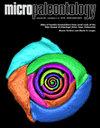希腊色雷斯盆地Fanari上始新世大型底栖有孔虫的系统古生物学和生物地层学
IF 1.6
4区 地球科学
Q3 PALEONTOLOGY
引用次数: 0
摘要
古近系沉积物在希腊领土上延伸的色雷斯盆地的几个地方暴露出来。就保存、丰富程度和沉积物类型而言,最好的地点之一位于法纳里村(科莫蒂尼市西南)的海岸线上。对始新世上部浅海碎屑沉积物组成的两个露头进行了取样,分析了大型底栖有孔虫(LBF)的全谱分布,其中包括丰富多样的orthophragines (Discocyclina、Orbitoclypeus和Asterocyclina)、Nummulites (Nummulites、Assilina、Operculina、Heterostegina和Spiroclypeus)以及其他底栖分类群(Silvestriella、Pellatispira、Fabiania、Sphaerogypsina等)。对Fanari的LBF进行了详细的系统描述,从而细化了整个层序对应于晚普利亚盆世的SBZ(浅底栖带)20的生物地层年龄。在希腊首次鉴定了24个分类群,其中6个亚种隶属于12属,并进行了形态计量学分析。LBF组合的特点是几乎贯穿整个层序的法氏Nummulites的持续存在。最丰富的种类是马达拉兹糙皮螺旋体(Pellatispira madaraszi)和carpaticus螺旋体(Spiroclypeus carpaticus),尽管它们与正酞胺一起出现在序列的上部。层序中有孔虫的分布为法纳里地区的古环境观测和演化重建提供了依据。在碳酸盐岩台地上浅部前斜坡处划分出三种主要的海相陆架沉积相,使得法纳里剖面不仅是最新普里阿伯世的关键沉积相区,也是外陆架生物相的关键沉积相区。本文章由计算机程序翻译,如有差异,请以英文原文为准。
Systematic paleontology and biostratigraphy of upper Eocene larger benthic foraminifera from Fanari (Thrace Basin, Greece)
Paleogene sedimentary deposits are exposed in several localities along the extended Thrace Basin in the Greek territory. One of the best sites in terms of preservation, richness and type of sediment occurs along the coastline of Fanari village (SW ofKomotini city). Two outcrops, which consist of upper Eocene shallowmarine clastic sediments, were sampled to analyze the full spectrum of larger benthic foraminifera (LBF) that comprises a rich and diverse assemblage of orthophragmines (Discocyclina, Orbitoclypeus and Asterocyclina), nummulitids (Nummulites, Assilina, Operculina, Heterostegina and Spiroclypeus), and other benthic taxa (e.g., Silvestriella, Pellatispira, Fabiania, Sphaerogypsina, etc.).Adetailed systematic description of LBF from Fanari is presented,which refines the biostratigraphic age of SBZ (Shallow Benthic Zone) 20 corresponding to the late Priabonian for the whole sequence. Twenty-four taxa among which six at (chrono)subspecies level belonging to twelve genera were identified and morphometrically analyzed for the first time from Greece. The LBF assemblage is characterized by the constant presence of Nummulites fabianii almost throughout the whole sequence. The most abundant species are Pellatispira madaraszi and Spiroclypeus carpaticus, though they occur in the upper part of the sequence along with orthophragmines. The foraminiferal distribution in the sequence enables paleoenvironmental observations and the reconstruction of the evolution of the Fanari area. Three main depositional marine shelf facies are distinguished at the shallow upper foreslope of the carbonate platform, making the Fanari section a key area not only of latest Priabonian but also of outer shelf biofacies.
求助全文
通过发布文献求助,成功后即可免费获取论文全文。
去求助
来源期刊

Micropaleontology
地学-古生物学
CiteScore
3.20
自引率
6.70%
发文量
18
审稿时长
>12 weeks
期刊介绍:
The Journal of Micropalaeontology (JM) is an established international journal covering all aspects of microfossils and their application to both applied studies and basic research. In particular we welcome submissions relating to microfossils and their application to palaeoceanography, palaeoclimatology, palaeobiology, evolution, taxonomy, environmental change and molecular phylogeny. Owned by The Micropalaeontological Society, the scope of the journal is broad, demonstrating the application of microfossils to solving broad geoscience issues.
 求助内容:
求助内容: 应助结果提醒方式:
应助结果提醒方式:


